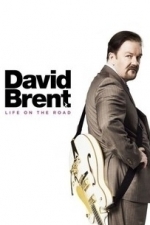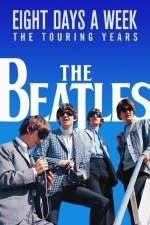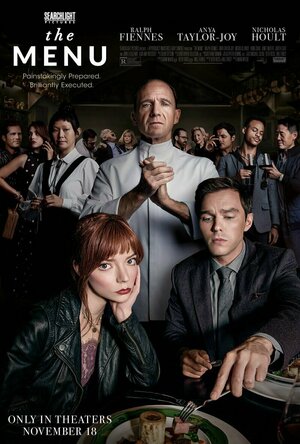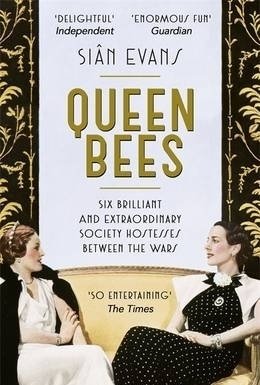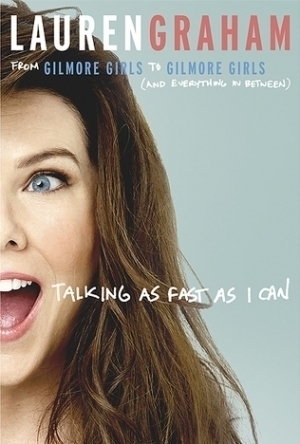
Video Editor - Videorama
Photo & Video and Entertainment
App
We are proud to present you the most advanced, yet easy to use, video editor and movie maker on the...

Vegetarian Living
Health & Fitness and Magazines & Newspapers
App
Vegetarian Living is a magazine for people who want to be inspired by vegetarian cooking – whether...

100 PICS Quiz
Games and Entertainment
App
The world's greatest picture trivia game ● Over 10,000 pictures to play ● Play over 100 quiz...

Kurio – App Berita Indonesia
News and Lifestyle
App
Want to read more news that is more accurate and "sane"? Kurio is the place. Enjoy completeness of...

Black Beauty & Hair – the UK's No. 1 black magazine
Lifestyle and Magazines & Newspapers
App
Black Beauty and Hair is the leading hair and beauty magazine for women of colour throughout the UK...
Bob Mann (459 KP) rated David Brent: Life on the Road (2017) in Movies
Sep 29, 2021
Here in “Life on the Road” we join Brent 15 years later where he has taken a rung or two down the career ladder and is working as a sales rep for Lavachem, a sanitary goods manufacturer, also based in Slough.
But Brent still harbours a dream of making it big in the rock world with his middle-of-the-road band called ‘Foregone Conclusion (2)’. Gathering around him his ethnic rapper ‘friend’ Dom Johnson (Doc Brown) and a band of session musicians (who can’t stand him), Brent cashes in “several pensions” to fund a tour of the venues of Berkshire… or at least, those that will give stage time over to a “shite band”. As the tour delivers predictably diminishing returns, and no record-company interest (at least, not in him) Brent is forced to face his inner demons and some uncomfortable truths.
Bringing TV comedy characters to screen is fraught with difficulty, and few have successfully done it. Even legends like Morecambe and Wise struggled with a series of lacklustre films. Perhaps in recent times Steve Coogan’s Alan Partridge has come closest with “Alan Partridge – Alpha Papa” and indeed there are a lot of similarities visible between Partridge and Brent: both have extreme ego issues and self-centredness. But there are significant differences as well, for while Partridge is just an irritatingly loud and obnoxious minor-celebrity Brent – as this film makes much clearer – has real mental illness.
Brent - the sun shines out of his earhole.
Brent – the sun shines out of his earhole.
Is this therefore a comedy at all? Well, yes, but in a very black way. There are certainly moments of excellent humour, with the tattooing scene being a high-point. But the result of watching Brent’s progressive decline, with his nervous laugh as a constant ‘fingernails on chalk board’ reminder of his insecurity, results in a level of audience squirming that is palpable. Everything he does is perverse, from describing in excruciating detail every song before singing it, to spending his money on multiple hotel rooms when every gig is within the County of Berkshire.
As a black comedy its important that it doesn’t outstay its welcome, and at 96 minutes it doesn’t. However, the film lacks the courage of its own dark convictions, and unnecessarily switches tack in the last reel to provide a degree of redemption for Brent. Whilst ‘sweet’, it is also implausible given what’s happened before and I would have suspected the interference of the director in lightening the mood of the writer’s original intent. However, as Gervais is both writer and director, there is no such excuse. That’s a shame.
So, in summary, an uncomfortable watch that aligns appropriately with the high squirm factor of the original TV show. Prepare to laugh, but feel a bit guilty in doing so.
Bob Mann (459 KP) rated The Beatles: Eight Days A Week - The Touring Years (2016) in Movies
Sep 29, 2021
Ron Howard’s film focuses on “the touring years” which as depicted were truly manic, spanning from 1963 to 1966 before then skipping forward to 1969 for their final rooftop concert. This was in a time when airline travel was not the more comfortable and smoke-free environment it is today, so these worldwide trips much have been seriously grueling, even without the adoration that reached dangerous proportions when they reached their destinations.
Howard has clearly had his research team scour the world for archive clips since – whilst sensitively skipping some of the more ‘commonly seen’ materials, like the “jewelry shaking” clip – the film shows concert action I certainly had never seen before.
The film is also nicely interlaced with celebrity cameos recalling their linkage to the Fab Four’s performances (often moving, like Whoopi Goldberg’s) and the group’s “legacy” effect on modern-day art (in Richard Curtis’s case rather less convincing). One of the most striking of these is that of Sigourney Weaver recounting her attendance as a pre-teen at the Beatle’s Rose Bowl performance in LA. There, in the newsreel footage of adoring fans, is the unmistakable face of the ‘before she was famous’ actress: at least I hope it really was her (as the clip’s timing implied) and not a lookalike, since that would be really disappointing!
Also featuring – although not enough for my liking – are Paul McCartney and Ringo Starr, recounting their feelings about the events and what happened behind the closed doors of hotel rooms or – most notably – a meat truck.
What shines through is the honesty and intelligence of Lennon and McCartney, typified by the idiotic questioning of journalists, some of who had done so little homework they didn’t even know there wasn’t a Beatle called Eric! Some of the group’s off the cuff responses were priceless: “What is the secret of your success?” asks one journo. “We don’t know” quips John. “If we knew we’d form another group and be managers.”
While the film has enormous energy in its first two thirds, it rather runs out of momentum in its final reel…. a bit like the Beatles did in fact. It also has elements of gimmickry like the smoke rising from photo cigarettes which gets a tad tiresome after the tenth occurrence.
But this is a very watchable and enjoyable rock down memory lane for 50-somethings and for any fans old and young of the Fab Four’s music. Highly Recommended. Note that the documentary itself is about 90 minutes in length, with another 30 minutes of live concert music tagged onto the end post-titles (which for travel reasons I was unfortunately unable to stay for so can’t comment on).
BankofMarquis (1832 KP) rated The Menu (2022) in Movies
Nov 24, 2022
And I mean that as a compliment.
Written by Seth Reiss and Will Tracy, THE MENU tells the tale of an exclusive, isolated restaurant, the 12 clients that head out to the secluded island this restaurant is on and the ego-maniacal, celebrity chef that runs this restaurant - and this dining experience. What starts out as a satire of these types of restaurants, the chefs and the hero-worship of it’s clientele turns into something much, much more sinister.
This is a film in 2 parts - the first part is a satire of the “Foodie” World with the dishes being somewhat absurd - and believable - as the attendees gush over the dishes, trying to interpret what they are being served and why. The 2nd half turns darker - as the real theme of the night emerges - but it is not the horror/slasher film that one is led to believe in the trailer, it is more of a psychological suspense thriller with some gore to accentuate the themes. (But make no mistake, there IS gore).
Ralph Fiennes (Voldemort in the Harry Potter films) is the perfect choice as the central figure in this film, Chef Slowik. He controls the screen by standing still and when he speaks and goes into action he pulls the audience - and his clientele - into his web.
Anya Tayor-Joy (THE QUEEN’S GAMBIT) is growing into an actress that is extremely interesting to watch on film and she more than holds her own up against Fiennes in their scenes together. She becomes just as much a force as he is.
The supporting characters in this adventure are interesting ranging from the always good John Leguzamo to Judith Light to Nicholas Hoult and Janet McTeer. They all flesh out characters that could have been just 2 dimensional background characters, but in the capable hands of these performers, they become much more.
Special notice needs to be made of Hong Chau (DOWNSIZING) as Chef Slowik’s main assistant. She pretty much holds down the center of the first part of this film (as we build up the entrance of Fiennes’ character) and she pulls it off with an understated strong performance.
Director Mylod treads an interesting line in THE MENU as he starts this film as a satire, moves it to a dark comedy fairly quickly and then moves it to a much darker place while still keeping the satiric and dark comedic tones as the more sinister things are happening. It’s a tightrope walk to be sure, and Mylod pulls it off.
It’s the type of film that will be difficult to find an audience for it is 2 types of films put together as one - and neither will totally satisfy hard-core fans - but for someone who is looking for an intelligent suspense film (with some gore and, again, let me emphasize that there IS gore) than this MENU will satisfy.
Letter Grade: A-
8 stars (out of 10) and you can take that to the Bank(ofMarquis)
A spectacle of celebrity, talent and burning ambition, Queen Bees combines the biographical stories of six ambitious women who helped to shape the standards of British society between the two world wars. Londoner Siân Evans is a cultural historian who has previously worked with the Victoria and Albert Museum, National Trust and Design Museum, and takes great lengths to thoroughly research into her written subject in order to portray a highly accurate insight to the lives of historical figures. Due to the non-existent political status of women in the early 1900s, the women featured in this book are virtually unknown today, yet they had a great impact during the 20s and 30s and helped to shape the Britain of today.
Although not necessarily born into it, circumstances such as marriage meant these six women were regarded as upper class. In no particular order, the names impacting on the social revolution and thus featured in Queen Bees are as follows: Lady Nancy Astor, the first female MP; Lady Sybil Colefax, who became a friend of Edward VIII; Lady Emerald Cunard, also connected with the royal family; Mrs. Ronnie Greville, a rather formidable woman; Lady Edith Londonderry, the founder of the Women’s Legion; and Laura Corrigan, the youngest of the set. Evans talks the reader through these women’s careers as professional hostesses as they compete to throw the better party, entertaining famous writers and actors as well as members of royalty, both national and foreign.
What is perhaps the most interesting, and indeed the most worth learning, is the way a couple of these women altered the future of the British monarchy. Without their interference the future George VI would never have married Elizabeth Bowes-Lyon, and without their involvement in the relationship between Edward VIII and Wallis Simpson, George VI would never have come to the throne. This is such an important aspect of British history that has been widely left out and ignored. Without these hostesses influence we would all be experiencing a slightly different life.
In terms of the actual writing, Siân Evans manages fairly well to engage the reader as she relates the factual story in a more or less chronological way. A slight issue is the quick, often undetected, move from one woman to the next, resulting in a lot of confusion about who is who particularly at the beginning of the book. A lot of the narrative features other key figures from the same period and often moves away from the main characters, which, whilst interesting, is not what the reader necessarily expected from a book whose title Queen Bees suggested it was only going to be about the women’s lives.
Footnotes, quotes and extracts from letters and diaries help to make the book appear reliable, factual and believable. Some of the content, without back up, would have seemed rather fanciful or exaggerated. Queen Bees can be read as a source of entertainment or as a citation for historical research. What is found within these pages is a more unbiased account of the early twentieth century than would be found in numerous male dominated history textbooks.
Mature readers of all ages are likely to gain something from reading Queen Bees – pleasure, knowledge etc., however it is most likely to appeal to the contemporary feminist. With this in mind, be aware that the six hostesses were not feminists of their time; they were not involved in Suffragette movements and were fairly content to live off money earned by their husbands or fathers. Yet, on the other hand, they impacted on the future of Britain as much as the male politicians of the time. Highly political in content, Queen Bees is worth reading to discover our own history, but be prepared for initial confusion over who is who and rather lengthy paragraphs.
I've read a spate of celebrity memoirs over the years and always felt a tad let down. Of late, I've read Anna Kendrick's and Carrie Fisher's latest. I enjoyed them, but they just didn't completely fit the bill for me. (Is that the phrase? I don't know. This is why I'll never get my own memoir.) But Graham's book was really fun and a step above. I know it won't be that way for everyone. And I'm not just completely swayed by my absolute love for both Lauren and her characters (both Lorelai and Sarah Braverman), because I also love Anna Kendrick, Tina Fey, etc, and didn't adore their memoirs.
Graham's book is filled with fun observations about her work over the years, particularly on Gilmore Girls. I could have read about 100,000 more of her perceptions. Some of them are so unfathomable because they counteract the completely realistic portrayal of the characters on the show. But they are insightful and intriguing. Graham reminisces about her time on the actual show -- a lot of it reinforced by going back and watching the episodes (something she does reluctantly, as she hates watching herself on film). She admits that she doesn't remember a lot about that time without the help of watching the show. I've read a lot of reviews that her insights about that time on the show are slim, and it's true, but I still found them delightful and entertaining. Since she doesn't remember much otherwise, I'd rather have these tidbits than nothing. Plus, there's more to the book than just those memories. (Still, can we all just petition Lauren Graham to keep a diary for the rest of her life going forward?)
While reading the book, it's kind of crazy to realize how much can change in eight years -- between the end of Gilmore Girls and the start of the reunion show on Netflix. Graham points that out too, in the humorous way that only she can pull off. The layout of her book works, and I liked all the pictures she interspersed throughout. She's a strong writer, and the little life lessons at the end of each chapter do not seem too forced. We hear about her childhood, her relationship with Peter Krause, and Graham's aversion to technology. What I enjoyed is that Graham comes across as both believable and appreciative of her fame (unlike some memoirs I've read lately).
Finally, Graham kept a journal during her time on the Netflix revival of Gilmore Girls, so we get a little more insight into that show. My favorites were some of the guest characters, how she had no idea about the four words controversy all these years, and her actual thoughts on those infamous four words. Overall, sure, this book is a little light. But it still spans a lot of Graham's life and I felt like a learned a decent amount about her, considering she's such a private person (something she repeatedly mentions). She's a fun and humorous woman, and I gained some insights about all the various versions of Gilmore Girls I would have never had before. I read this book in basically one day and thoroughly loved it. This book may not have the same impact on someone who isn't a Graham/Gilmore Girls/Parenthood fan, but if you are, it's a fun, quick read.
